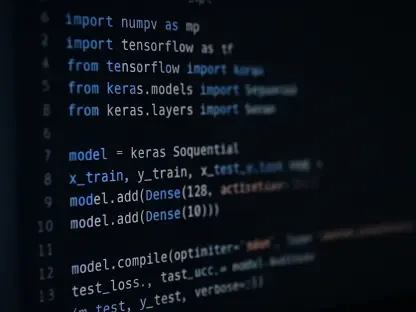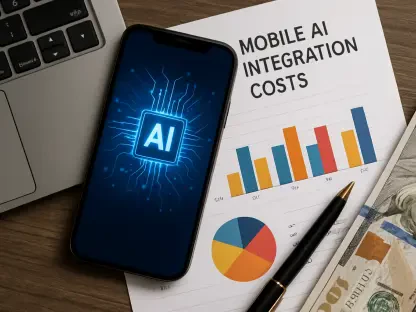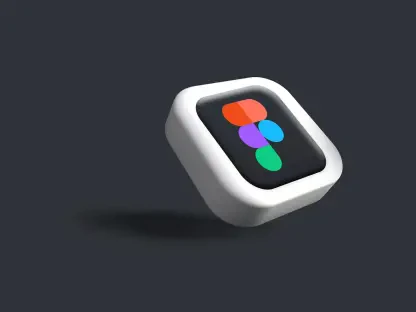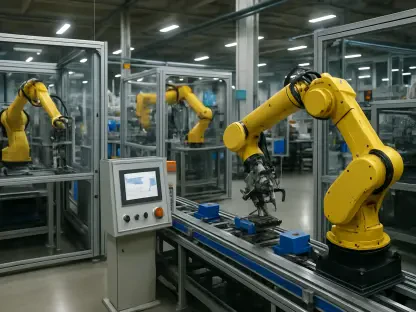For better or for worse, AI is making its presence felt in every industry, including web development, positioning itself close to the epicenter of the AI revolution. If you aren’t yet leveraging AI in your web development career, this article provides a comprehensive guide to get you started and harness its power effectively. Ignoring the rise of AI in web development could leave you behind in this rapidly evolving field, where staying updated and adaptable is more crucial than ever.
While some may have reservations about AI’s impact on jobs and craftsmanship, incorporating AI tools into your workflow can significantly improve productivity and efficiency. AI is here to stay, and it makes sense to understand and utilize its potential rather than resist it. Below are eight essential AI tips for web developers, aiming to fortify your career and enhance your web development practices.
1. Get Started
Integrate AI into your workflow as soon as possible. Begin today if you haven’t already because your job may depend on it. AI is transforming industries at an unprecedented pace, and web development is no exception. Failing to adopt AI tools and technologies might put you at a disadvantage compared to your peers who have embraced this change. The efficiencies and enhancements AI can bring to your projects are too significant to ignore.
You don’t need to adopt every AI tool available; start with understanding the basics and gradually incorporate more advanced tools as you get comfortable. The initial hesitation is normal, especially considering the craft of coding and the nuances involved. However, overcoming this reluctance is crucial. Think of AI not as a replacement but as a powerful ally that can handle repetitive tasks, expedite processes, and even introduce new creative possibilities in your projects.
2. Establish an AI Companion
Utilize specialized AI tools tailored for development tasks to achieve optimal performance and efficiency. Examples include GitHub Copilot and JetBrains’ AI Assistant, both designed to assist developers in coding smarter and faster. These tools can provide real-time suggestions, automate routine coding tasks, and even debug your code snippets. Experiment with these tools to see which ones suit your needs best.
GitHub Copilot, for example, integrates seamlessly with your coding environment and can drastically reduce the time spent writing boilerplate code snippets. Similarly, JetBrains’ AI Assistant offers features specifically designed for various programming languages. By testing these tools, you can determine which fits best into your workflow, providing the highest value without disrupting your existing processes. Establishing an AI companion in your toolkit can make your development process more streamlined and efficient.
3. Automate Commit Messages
Save considerable time by using AI to generate commit messages, a task often tedious yet important for code documentation. Automated commit messages can ensure consistency and clarity in your version control logs. JetBrains’ AI Assistant can handle this efficiently with a custom prompt, making this process seamless and standardized.
To set up an automated commit message system, configure the AI tool with predefined prompts that align with your documentation standards. For instance, you can use a template that ensures your commit messages are concise, structured, and follow a conventional format, thus maintaining high-quality documentation. Automating this aspect not only saves time but also minimizes the margin for error or miscommunication in your commit history, which is crucial for collaborative projects and code maintenance.
4. AI Code Evaluation
Use AI for code reviews to enhance your coding practices and ensure code quality is maintained across your projects. Tools like CodeRabbit can offer valuable insights and help improve your code by identifying potential issues that might be overlooked otherwise. An AI-driven code review process can provide immediate feedback, allowing for quicker iterations and improvements.
Incorporate AI code evaluation tools within your IDE or as a part of your continuous integration pipeline. This setup ensures that each piece of code is scrutinized for performance, security, and best practices before being merged into the main codebase. Such evaluations not only promote a cleaner and more efficient codebase but also allow developers to learn and adapt to better coding methodologies through continuous feedback. Embracing AI in code reviews can thus uplift the overall development standards in your projects.
5. AI-Assisted Code Refactoring
Employ AI tools to help restructure and clean up your code, making it more maintainable and efficient. AI-assisted code refactoring can automate the tedious parts of code optimization, allowing you to focus on more complex and impactful tasks. JetBrains provides solid refactoring features that leverage AI to suggest improvements and clean up your code.
Using AI tools for code refactoring can highlight areas where your code can be improved, such as simplifying complex logic, removing redundancies, or enhancing performance optimizations. These tools can also provide suggestions for modernizing your codebase by incorporating newer language features and best practices. Implementing AI-driven refactoring in your development process ensures that your code remains agile, adaptable, and ready for future enhancements.
6. Tackle Test Projects
Identify and list your current pain points and recurring tasks that often bog you down. Execute AI-driven projects specifically aimed at addressing these problems and developing your proficiency in using AI. By engaging in such projects, you gain hands-on experience and become more adept at integrating AI into your workflow efficiently.
Test projects can serve as experimental grounds where you can try out different AI tools and techniques without the pressure of a live production environment. Documenting your progress and the outcomes of these projects can also serve as a valuable personal reference, helping you refine your approach and identify best practices. This iterative learning process builds a robust understanding of AI applications in real-world scenarios, making you a more resourceful and innovative web developer.
7. Continuously Explore AI Solutions
Commit to regularly investigating and testing new AI tools that might provide a competitive edge in your niche. The tech industry evolves rapidly, and staying updated with the latest AI solutions can significantly impact your ability to innovate. Make exploring new AI technologies a routine practice, ensuring you remain at the forefront of advancements.
Maintaining a proactive approach towards discovering and implementing new AI tools involves setting aside time for research and experimentation. Subscribe to tech news, join relevant forums, or follow industry leaders to stay informed about the latest developments. Trialing these tools helps you identify which ones are worth integrating into your workflow, thus continually enhancing your productivity and project outcomes.
8. Identify AI Boundaries
Determine which areas of your work should be off-limits for AI, recognizing the importance of human creativity and expertise. Knowing when not to use AI is as important as knowing how to use it effectively. This balance ensures that technology supplements your skills without overshadowing the essential human elements of web development.
Reflect on tasks that require a deep understanding of context, creativity, and nuanced decision-making—areas where human intervention is irreplaceable. By setting clear boundaries, you can effectively delegate routine tasks to AI while focusing on the strategic and creative aspects of your projects. This approach ensures you leverage AI for maximum efficiency while preserving the unique value of your expertise.
Conclusion
Identify which aspects of your work should remain untouched by AI, appreciating the vital role of human creativity and expertise. Understanding when AI should be avoided is as crucial as knowing how to integrate it effectively. Striking this balance ensures technology enhances rather than overshadows the essential human aspects of web development.
Consider tasks that demand a profound understanding of context, creativity, and nuanced decision-making. These are areas where human involvement is indispensable. Clearly defining these boundaries allows you to delegate routine, mundane tasks to AI. This frees you to concentrate on the strategic and creative facets of your projects.
By setting these boundaries, you maximize AI’s efficiency while safeguarding the unique value of your human expertise. Ultimately, this approach enables you to harness the full potential of AI for routine operations while ensuring that the distinctive, human touch remains integral to the innovative and complex elements of your work. This strategy not only elevates your productivity but also enhances the overall quality and originality of your contributions.









